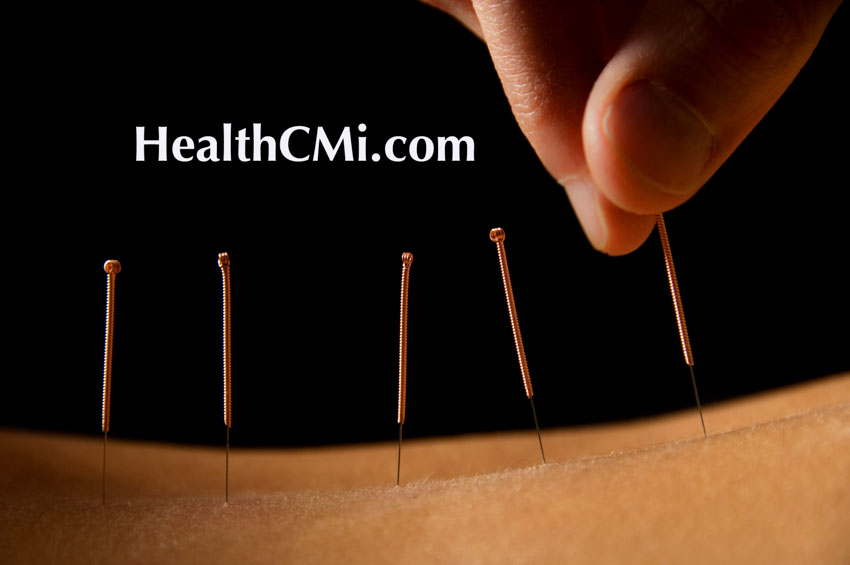
Acupuncture is effective for treating incomplete spinal cord injury (iSCI). Researchers from Zhengzhou First People’s Hospital conducted a clinical trial comparing the efficacy of routine physical therapy with routine care plus acupuncture. The results show that the addition of acupuncture improves movement restoration for patients. Upon completion of the study, the total efficacy rate for the acupuncture plus physical therapy group was 86.36% while the routine care group’s was 68.18%. The results indicate that an integrative medicine approach to patient care improves patient outcomes.
The efficacy rate was based on a 3-level symptom scoring system:
- Significantly effective: Spinal nerve function recovery above level 2
- Effective: Spinal nerve function recovery at level 2
- Ineffective: Spinal malfunction persisted
Measurment parameters included ADL (Activities of Daily Living), ASIA (American Spinal Injury Association) motor score, ASIA sensory score, Barthel index, and WISCI-Ⅱ (Walking Index for Spinal Cord Injury II). The Ashworth scale was used to assess walking ability. All measurements demonstrated greater improvements in the integrative treatment group.
From August 2019 to July 2020, the study included 88 patients admitted to the hospital that were evenly divided into a routine physical therapy and an integrative therapy group. In the routine physical therapy group, 25 cases were males and 19 were females. Age range was 21 to 68 years with a mean age of 48 years. Based on the American Spinal Injury Association (ASIA) scale, 29 cases were at level C and 17 were at level D. In the integrative therapy group, 27 cases were males and 17 were females. Age range was 25 to 69 years with a mean age of 48 years. Based on the AISA scale, 30 cases were at level C and 14 were at level D.
All patients underwent a CT or MRI scan to confirm iSCI. Sensory and motor functions were suspended below the normal neurological level and lower limb movement was restricted. According to the Walking Index for Spinal cord Injury (WISCI), all patients were at level 6 or above. Those with severe spinal cord cavity conditions, complete spinal cord injury, poor spinal stability, ankylosing spondylitis, tuberculosis, tumors, acute myelitis, venous thrombosis, fractures in the lower extremity, or cerebrovascular lesions were excluded from the research.
Patients in the routine physical therapy group completed a 30-minute therapy session daily for a total of six weeks. While the spinal cord was well-protected, patients were instructed to keep their unaffected limb still and perform passive pulling exercises. Using remaining muscular strength, body balancing and coordination exercises, joint movement exercises, walking, turning, and standing exercises were also performed by the patients.
The integrative group was given acupuncture along with the above therapy. Sterile single-use acupuncture needles (0.30 mm × 0.40 mm) were inserted at the disinfected areas of the main treatment points: 1–2 pairs of acupoints along bilateral EX-B2 (Jiaji) acupoints and the Du Mai (Governing Vessel). The supplementary points are listed below.
For upper limb symptoms:
- LI15 (Jianyu)
- LI11 (Quchi)
- LI10 (Shousanli)
For lower limb symptoms:
- GB30 (Huantiao)
- LV3 (Taichong)
- GB34 (Yanglingquan)
- ST36 (Zusanli)
For symptoms related to urination:
- BL23 (Shenshu)
- BL28 (Pangguangshu)
For symptoms related to defecation:
- BL25 (Dachangshu)
- BL57 (Chengshan)
Insertion depth was 1–1.5 cun. A mild reinforcing-attenuating manipulation method was employed. Needles were retained for 30 minutes after achieving deqi. Patients in this group completed a 30-minute therapy session daily, with six days of treatment and one day of rest completing a session. A total of six sessions were completed in total. The results of this study show that the addition of acupuncture for the treatment of iSCI greatly improves patient outcomes.
At HealthCMi, we suggest further research to include scalp acupuncture, including the methods pioneered by Dr. Ming-Qing Zhu, L.Ac. Scalp acupuncture is a leading micro-acupuncture system used in acupuncture neurology, including spinal cord injury recovery programs and stroke recovery programs. HealthCMi author and presenter Adam L. White, L.Ac., Dipl. OM. (NCCAOM), M.T.C.M. notes that, “Professor Zhu’s methods are vital in the field of acupuncture neurology, including the zone system of location and the chouqi and jingqi methods of attenuation and tonification. Based on over 25 years of using his system in the clinic, I believe his innovations are indispensable advancements in acupuncture that produce optimal patient outcomes.”
Reference:
CJGMCM Bright Traditional Chinese Medicine, Vol. 36, No. 24, Article number: 1003-8914 (2021) 24-4220-03.


